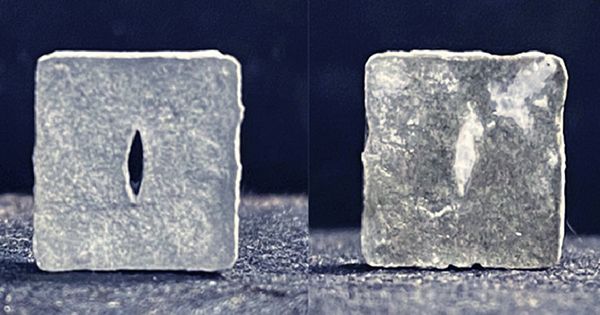Mount Etna’s unusually enormous CO2 emission is caused by the transfer of carbon dioxide stored in the Earth’s lithospheric mantle beneath the Hyblean Plateau in southern Italy at a depth of 50 to 150 kilometers.
This is the result of a study undertaken by an international team of geologists, including academics from the Universities of Florence (Italy) and Cologne (Germany), as well as the Italian National Research Council’s (CNR) Istituto di Geologia Ambientale e Geoingegneria.
To arrive at this conclusion, the researchers used cutting-edge, high-precision measurement tools to detect the ratios of a specific set of components in the magmas generated by the volcanoes. The findings were reported in the journal Geology in an article titled “A carbon-rich lithospheric mantle as a source for the enormous CO2 emissions of Etna volcano (Italy).”
Mount Etna (Italian: Etna (ˈɛtna) or Mongibello) is an active stratovolcano on the east coast of Sicily, Italy, located between Messina and Catania in the Metropolitan City of Catania. It is Europe’s tallest active volcano, with a summit elevation of roughly 10,900 feet (3,320 metres).
Its height changes, as it does with other active volcanoes, growing due to deposition during eruptions and lowering due to the periodic collapse of the crater’s rim. Etna has a basal circumference of 140 kilometers (87 miles) and a surface area of 1,190 km2 (459 sq mi). It is by far the largest of Italy’s three active volcanoes, standing roughly two and a half times the height of Mount Vesuvius, the next largest.
Variations in atmospheric CO2 over geological time were primarily driven by volcanic emissions, which are difficult to predict since they are not proportional to the volume of magmas erupted.
Similar carbon-rich domains might be hidden beneath other volcanoes worldwide, hence contributing to their CO2 emissions. The innovative trace element approach used in this study represents a promising way to better estimate the contribution of the carbon-enriched lithosphere to overall volcanic CO2 emissions, both at present and in the past, which may have played a key role in changing the climate of our planet.
Dr. Alessandro Bragagni
Indeed, when compared to the quantity of CO2 that can be dissolved in their magmas, some volcanoes emit a disproportionately large amount of CO2. The most dramatic example is Mount Etna, which contributes 10% (9000 tons/day) of current worldwide volcanic CO2 emissions. That’s three times the amount of CO2 emitted by a volcano like Kilauea (Hawaii), which produces four times the amount of lava.
Mount Etna is one of the world’s most active volcanoes, with eruptions occurring on a nearly daily basis. The volcanic top was approximately 170 feet (52 meters) higher in 1865 than it was in the early twenty-first century. Mount Etna has been declared a Decade Volcano by the United Nations due to its recent activity and proximity to a population.
The researchers used the rare elements Niobium (Nb) and Tantalum (Ta) as tracers to analyze magmas from four volcanoes in the region (Etna, Vulture, Stromboli, and Pantelleria). In many rocks, Nb/Ta ratios are fairly consistent, and only a few geological processes, such as the infiltration of carbonate-rich melts into the Earth’s mantle, change them.
There were 26 additional eruptions between 1669 and 1900. The lava flow from the 1971 eruption endangered numerous settlements and devastated farms and vineyards. Since 2000, four flank eruptions have occurred on Etna: in 2001, 2002-2003, 2004-2005, and 2008-2009. In 2006, 2007-2008, January-April 2012, July-October 2012, December 2018, and February 2021, summit eruptions occurred.
In cyclical or virtually continuous tiny eruptions, Strombolian eruptions contain modest bursts of expanding gases that discharge clots of incandescent lava. Mount Etna was added to the list of UNESCO World Heritage Sites in June 2013.
The study discovered that magmas from Mount Etna and Mount Vulture have the highest Nb/Ta ratios of any active intraplate volcano. This indicates that the magma compositions point to the presence of highly carbon-rich lithospheric mantle zones under southern Italy.
During the melting of the magmas, this carbon is tapped. The process is linked to the region’s complicated geodynamic environment: Underneath the Hyblean Plateau in southern Sicily, carbon-rich lithospheric mantle regions can be found.
Tectonic activity, notably the rollback of the Ionian subduction plate, transports these domains to the region under Etna. On the other side of the Ionian plate, beneath Mount Vulture, a symmetric mechanism is most likely at work.
“The data also allow us to infer the contribution of such carbon-rich domains to the Earth’s atmosphere in the past, suggesting that the CO2 emissions of Mount Etna during its ancient activity might have been even higher than at present,” Professor Dr. Carsten Münker from the University of Cologne’s Institute of Geology and Mineralogy commented.
He and his colleagues were in charge of the extremely accurate measurements, which included the two crucial components Nb and Ta. Lead author Dr. Alessandro Bragagni, former postdoc at Cologne and now at the University of Florence, added:
“Similar carbon-rich domains might be hidden beneath other volcanoes worldwide, hence contributing to their CO2 emissions. The innovative trace element approach used in this study represents a promising way to better estimate the contribution of the carbon-enriched lithosphere to overall volcanic CO2 emissions, both at present and in the past, which may have played a key role in changing the climate of our planet.”
















